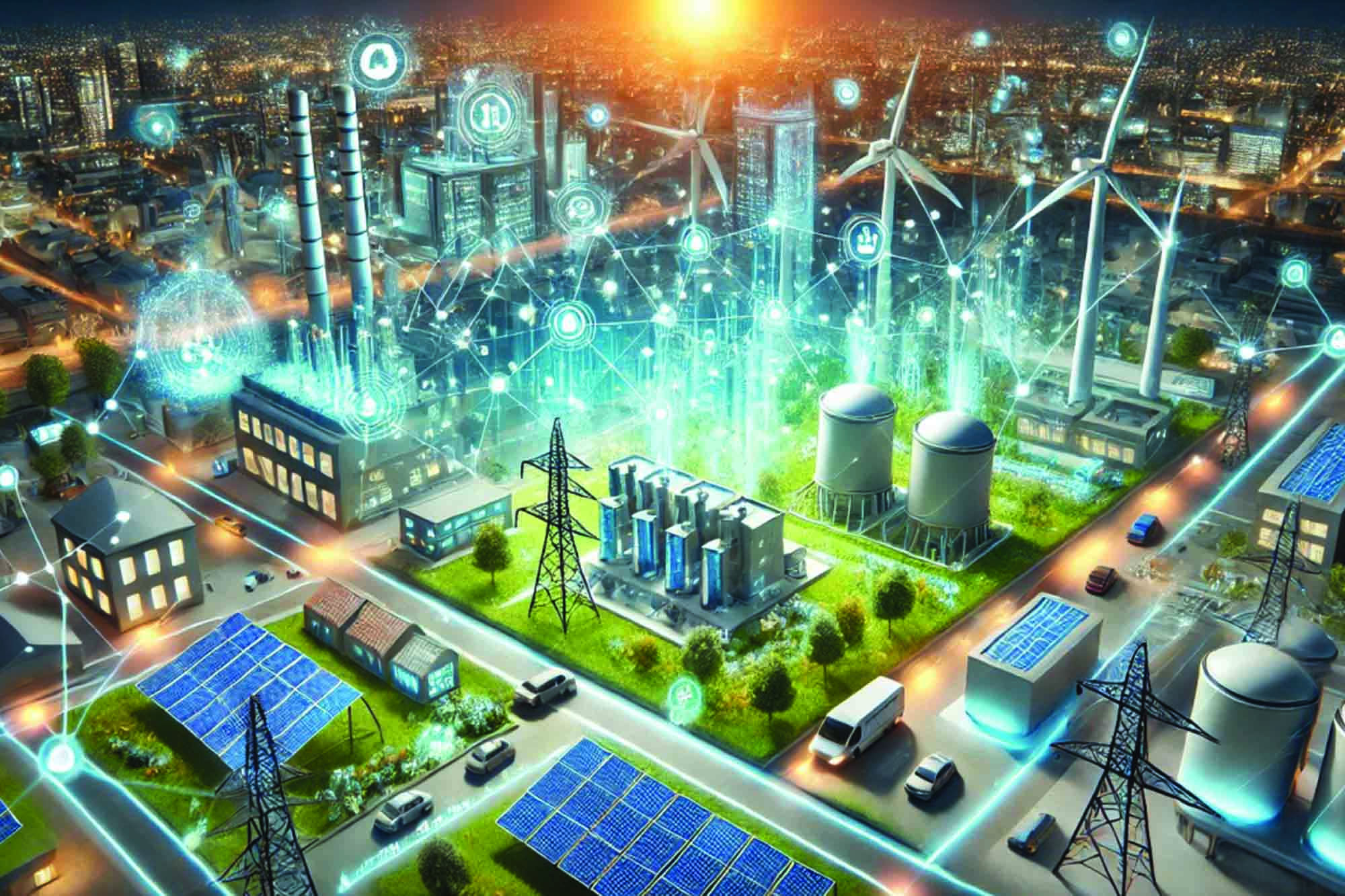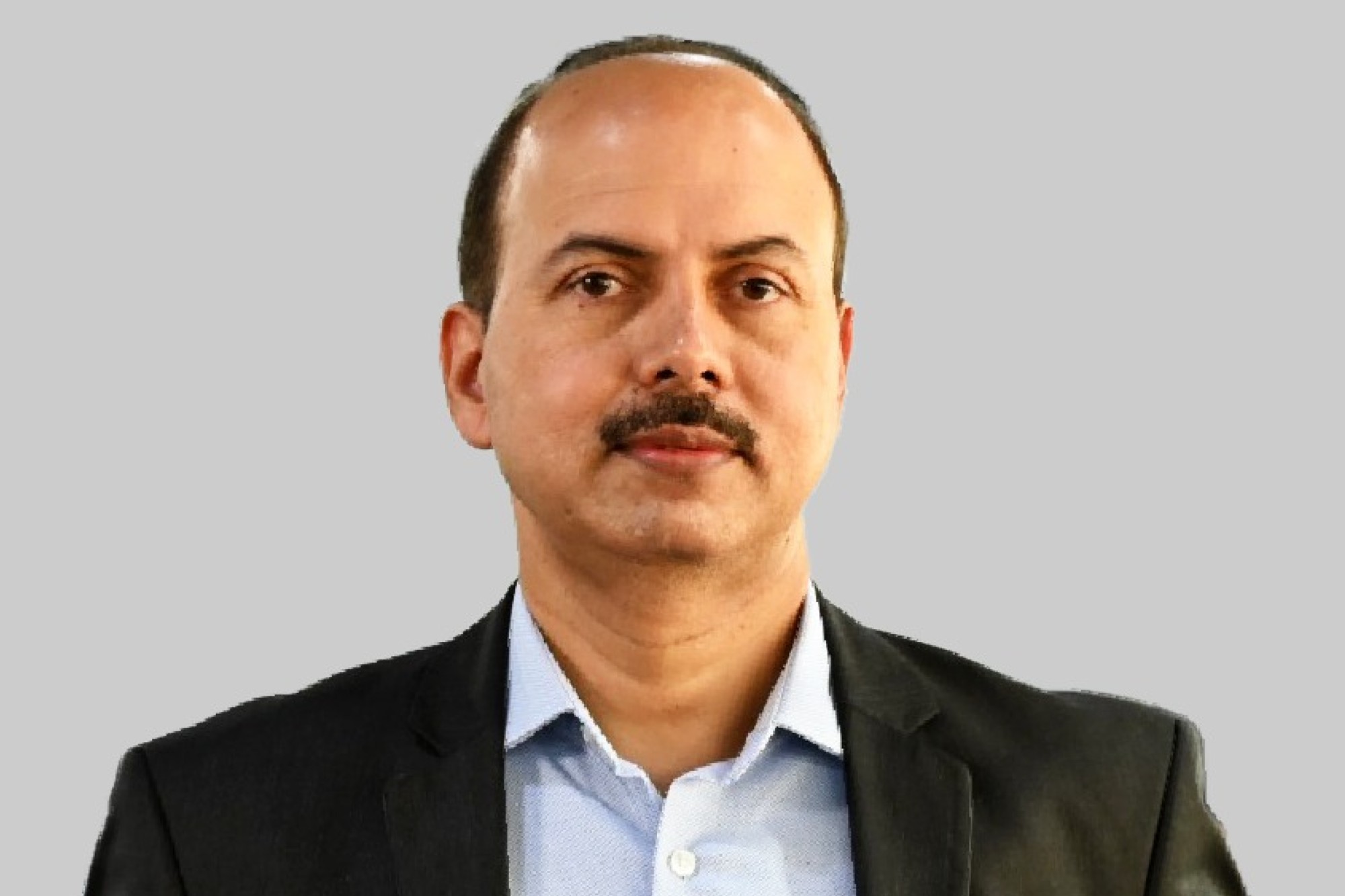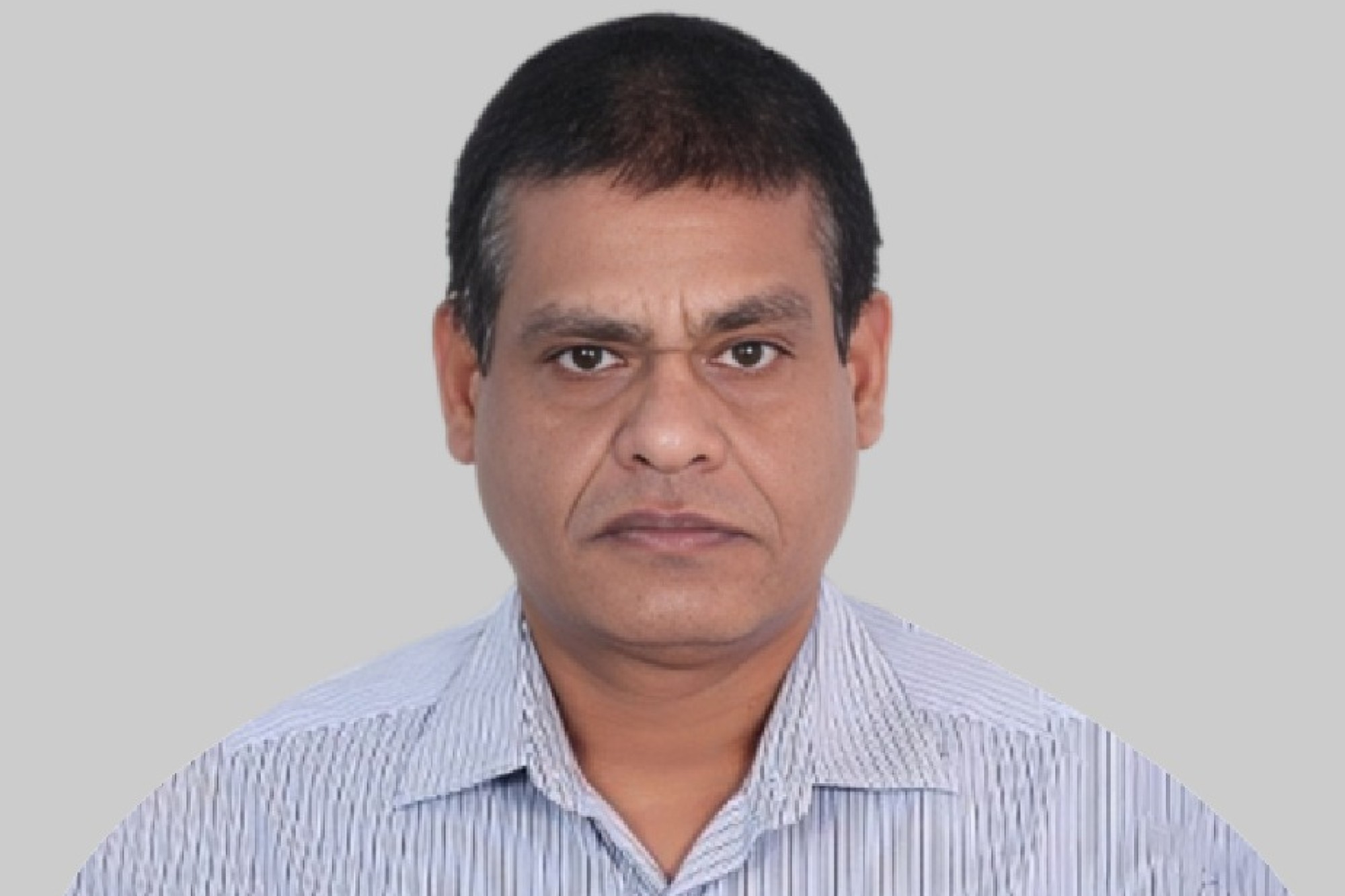Silent Rise of Electricity 4.0
By Staff Report June 25, 2025 11:24 am IST
By Staff Report June 25, 2025 11:24 am IST

This evolution represents a new paradigm where homes, businesses and communities become active participants in the energy economy.
——————————————————————–

Akilur Rahman, CTO- Hitachi Energy India
“Utilities face investment vs. ROI challenges. Smart metering, energy storage and grid modernisation need to show returns, not just in financial terms but also in consumer confidence and sustainability impact.”
—

Avinash Kumar, Addl. VP & Head- DSM and EE, BSES Rajdhani Power Ltd
“We already have recycling units that recover metals and carbon from used batteries, but policies need to catch up.”
—

Abhijeet Paranjape, Global Product Manager, Power Distribution- TE Connectivity
“We have already crossed 98 per cent coverage, but many freight corridors still lack full electrification. TE Connectivity is working on coach electrification, dedicated freight corridors and power connectivity in rail coaches.”
—

Gopinath Mishra, AVP, Product Management (Digital Solutions)- Kimbal
“Smart meters need to be backed by strong customer engagement. Currently, there is a trust deficit…That mindset must change through awareness, demonstration of benefits and real-time data insights.”
——————————————————————–
India stands at a defining juncture in its energy journey. As global conversations shift from carbon reduction to resilience and decentralisation, India is undergoing a silent revolution in how electricity is generated, distributed, stored, and consumed. This revolution, termed ‘Electricity 4.0’, is not merely about replacing fossil fuels with renewables; more than that, it signifies a deeper transition to digitally enabled, locally generated, and consumer-centric energy systems aimed at building a smarter, greener, and more inclusive future.
Electricity 4.0 represents a new paradigm where homes, businesses and communities become active participants in the energy economy. They are no longer just consumers; they are now prosumers capable of generating, storing and even selling energy. This shift is being propelled by a mix of policy innovation, emerging technologies, community engagement and private-sector investment. From smart meters and rooftop solar panels to electric vehicle (EV) charging stations and battery storage systems, the building blocks of this new grid system are rapidly taking shape across the country. Industry experts examine the silent revolution currently transforming the nation’s power landscape. Let us delve into the story to know the insights.
Distributed power system
The grid is rapidly decentralising, with households and villages evolving from passive consumers to active energy participants. Thanks to rooftop solar, battery storage and smart meters, homes can now generate, store and even feed electricity back into the grid. This shift empowers communities, enhances energy security and reduces dependence on centralised power infrastructure. Decentralised energy systems also support greater integration of renewables and localised energy resilience, making them crucial to sustainable and inclusive energy transition.
Gopinath Mishra, AVP, Product Management (Digital Solutions)- Kimbal says, “The underprivileged segment of society through the PM Suraj Yojana is now generating electricity on-site and even selling excess power back to the grid. With 500-odd villages equipped with rooftops, they can form microgrids, set up cooperatives and build localised power ecosystems.”
This vision of village-level energy democracy is rooted in technologies such as bi-directional smart meters, peer-to-peer (P2P) trading platforms, and load-limit controls, which enable consumers to become prosumers and communities to balance generation and demand dynamically.
However, Gopinath emphasises that for such initiatives to scale, “Smart meters need to be backed by strong customer engagement. Currently, there is a trust deficit; many perceive smart meters as a tool for overcharging rather than empowering. That mindset must change through awareness, demonstration of benefits and real-time data insights.”
Smart meter conundrum
Smart metering is central to the ‘Electricity 4.0’ vision of India, enabling real-time data energy efficiency and demand-side management. However, its rollout faces significant challenges. Technologically, integration with legacy systems, data security and network connectivity remain key concerns. On the perceptual front, resistance from consumers and distribution companies, stemming from cost, lack of awareness, or fear of surveillance, is slowing the adoption of smart meters. Overcoming these barriers requires robust infrastructure, clear communication and trust-building measures to unlock the full potential of smart and digitised power networks.
“Initially, consumers believed smart meters were just recording more consumption,” Gopinath says. “What is missing is a useful application interface and real-time energy visibility. Utilities need to provide not just infrastructure but insights that empower,” he adds. Another challenge is infrastructure interoperability. According to Gopinath, “There is limited standardisation for system integrations in India. Interoperability guidelines only came in recently, and questions remain about what happens to older deployed systems.”
Avinash Kumar, Addl. VP & Head – DSM and EE, BSES Rajdhani Power Ltd, agrees that smart meters need to show tangible benefits to consumers. “We must demonstrate incentives like electricity bill rebates for low consumption or load shifting. Only then will consumers embrace the system,” he states. Behind the scenes, smart meters feed data every 15 to 30 minutes to utility control centres via mesh networks or cellular communications. Yet, rural connectivity gaps remain a bottleneck. According to Avinash, “Smart meter data can empower tariff-based decision-making and build trust, but only if it is made accessible and actionable to the end user.”
A notable aspect of this entire smart metering scenario is the trust factor that needs to be addressed. Expressing his views on this, Akilur Rahman, CTO – Hitachi Energy India, says, “There’s fear around technology that it manipulates bills, and it is intrusive; we need to educate and demonstrate how smart meters, solar power and storage benefit consumers and do not penalise them.” Agreeing on his point, Avinash explains, “The only way forward is transparency and consumer empowerment. Real-time insights, flexible tariffs and community engagement can make Electricity 4.0 not just a government initiative but a people-powered movement.”Battery energy storage
The country is advancing toward its ambitious target of 500 GW of non-fossil energy capacity by 2030. In this advancement, Battery Energy Storage Systems (BESS) are emerging as a vital enabler of grid stability. With the increasing share of variable renewables like solar and wind, BESS helps balance supply and demand, store excess energy and ensure reliable power during peak hours or outages. Their deployment is crucial for enhancing grid flexibility, which supports decentralised generation, accelerating the transition to a cleaner and more resilient energy ecosystem. The industry experts shed light on this evolving sector. Avinash opines, “Renewables have an inherent variability, with forecasting challenges behind-the-meter storage becoming vital for balancing local demand and ensuring grid reliability.”
Akilur Rahman of Hitachi Energy emphasises the role of storage in rural inclusion. “Even in areas where power is available, it is often intermittent due to load shedding. Compact energy storage systems can provide continuity and resilience.” He also highlights the potential of community energy models where farmers and rural households store and trade energy within their locality. “It is a big step forward; people can generate, store and sell within the village ecosystem that creates circular energy economies.”
Speaking on the life-cycle of batteries, Akilur Rahman says, “Battery storage is still far better than burning coal, disposal and second-life reuse are challenges, yes, but policy is evolving. The government is working on frameworks for battery recycling, reuse of rare earths and end-of-life management.” Avinash shares that most batteries retain approximately 70 per cent of their capacity even after 12 years. These can be repurposed for secondary applications. “We already have recycling units that recover metals and carbon from used batteries, but policies need to catch up,” he adds.
Railways electrification
Railway electrification is a crucial component of the ongoing evolution of electricity. The energy transition extends beyond households and villages, reaching railway networks. From electrified freight lines to green industrial zones, clean energy is being integrated across sectors that support the nation’s broader goal of technological advancement, leading to sustainability and economic growth in a low-carbon future.
Abhijeet Paranjape, Global Product Manager, Power Distribution – TE Connectivity sheds light on this crucial yet overlooked area. “Railway electrification is critical for the green infrastructure goals of India,” Abhijeet says. “We have already crossed 98 per cent coverage, but many freight corridors still lack full electrification. TE Connectivity is working on coach electrification, dedicated freight corridors and power connectivity in rail coaches,” he further explains.
From Western and Eastern DFCs to the Vande Bharat expansion, electrification is central to avoiding collisions, enhancing efficiency and reducing carbon emissions. The government plans to electrify 5,000 km of anti-collision rail tracks, opening new opportunities for OEMs and system integrators. On the EV front, Avinash notes that urban infrastructure is being ramped up, “EV charging stations are expanding, and infrastructure planning is underway to meet future urban demand. These will become a major component of Electricity 4.0,” he notes.
Demand response and tariff innovation
With India targeting a peak electricity demand of nearly 388 GW by FY2032, demand response (DR) is gaining traction as a vital tool. By enabling consumers to adjust usage during peak hours, DR enhances grid flexibility, reducing strain on infrastructure and supporting the integration of renewable energy sources. Sharing more insight on this approach, Avinash explains, “DR is the next step for Indian utilities; it helps manage peak demand by incentivising consumers to shift or reduce their load. But for DR to succeed, the customers need to see direct benefits.”
Currently, there are limited incentives for consumers to participate in DR programmes. Gopinath observes that there is no declared reward mechanism for consumers who shift load or reduce usage. Unless there is a financial incentive, adoption will be limited. Technology offers solutions; smart meters can enable AI-based home energy management systems that automatically regulate appliances during peak hours. Akilur points out, “People will only adopt these systems when they see their monthly energy bill going down. ROI is key.”
Policy perception and path forward
Electricity 4.0 is more than a technological upgrade; it is a shift in how energy is governed, consumed and trusted. It demands smart regulation, consumer awareness and digital trust to enable decentralised, clean and efficient power systems. This shift must include societal participation to ensure equitable and inclusive energy access for all.
Explaining this paradigm, Akilur opines, “Utilities face investment vs. ROI challenges. Smart metering, energy storage and grid modernisation need to show returns, not just in financial terms but also in consumer confidence and sustainability impact.” Standardisation is also critical. Gopinath notes that while programmes have been launched, interoperability between hardware and software systems remains patchy. “Without standardisation, integration will be chaotic. Regulatory bodies need to act swiftly and collaboratively.”
The Indian electricity landscape is advancing rapidly to the next level. This advancement will only succeed if people are placed at its core. Engaged consumers, informed farmers, adaptive utilities, and proactive policymakers must collectively drive this change. When every household becomes an energy contributor, every village a grid node and every citizen an energy manager, the Indian grid will no longer be just a system of transmission lines but a network of empowered communities. Electricity 4.0 is not just an upgrade in power. Rather, it is a redefinition of energy democracy where control and sustainability go hand in hand.
Quotes:
Akilur Rahman, CTO- Hitachi Energy India
“Utilities face investment vs. ROI challenges. Smart metering, energy storage and grid modernisation need to show returns, not just in financial terms but also in consumer confidence and sustainability impact.”
Avinash Kumar, Addl. VP & Head- DSM and EE, BSES Rajdhani Power Ltd
“We already have recycling units that recover metals and carbon from used batteries, but policies need to catch up.”
Abhijeet Paranjape, Global Product Manager, Power Distribution- TE Connectivity
“We have already crossed 98 per cent coverage, but many freight corridors still lack full electrification. TE Connectivity is working on coach electrification, dedicated freight corridors and power connectivity in rail coaches.”
Gopinath Mishra, AVP, Product Management (Digital Solutions)- Kimbal
“Smart meters need to be backed by strong customer engagement. Currently, there is a trust deficit…That mindset must change through awareness, demonstration of benefits and real-time data insights.”
We use cookies to personalize your experience. By continuing to visit this website you agree to our Terms & Conditions, Privacy Policy and Cookie Policy.